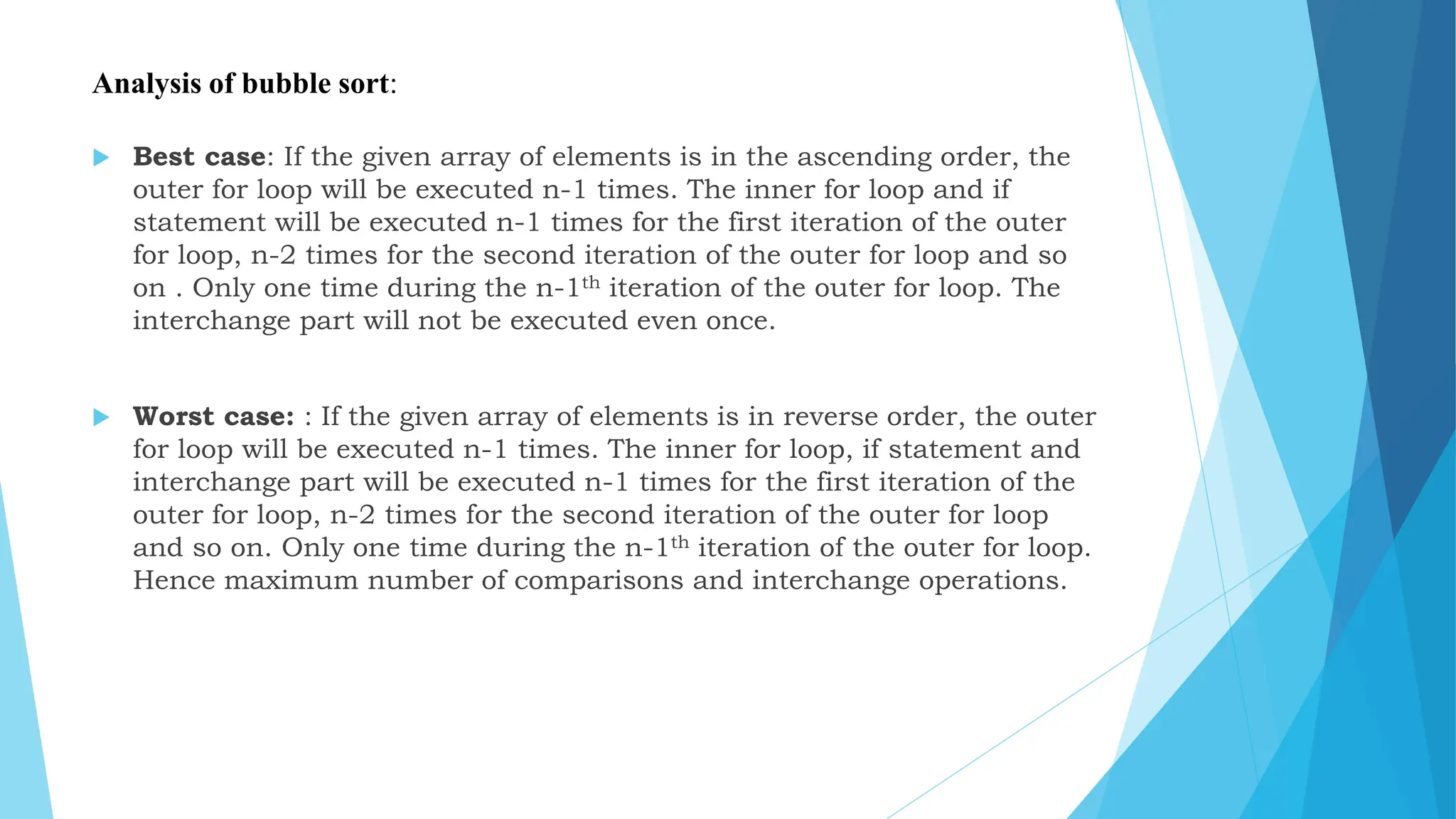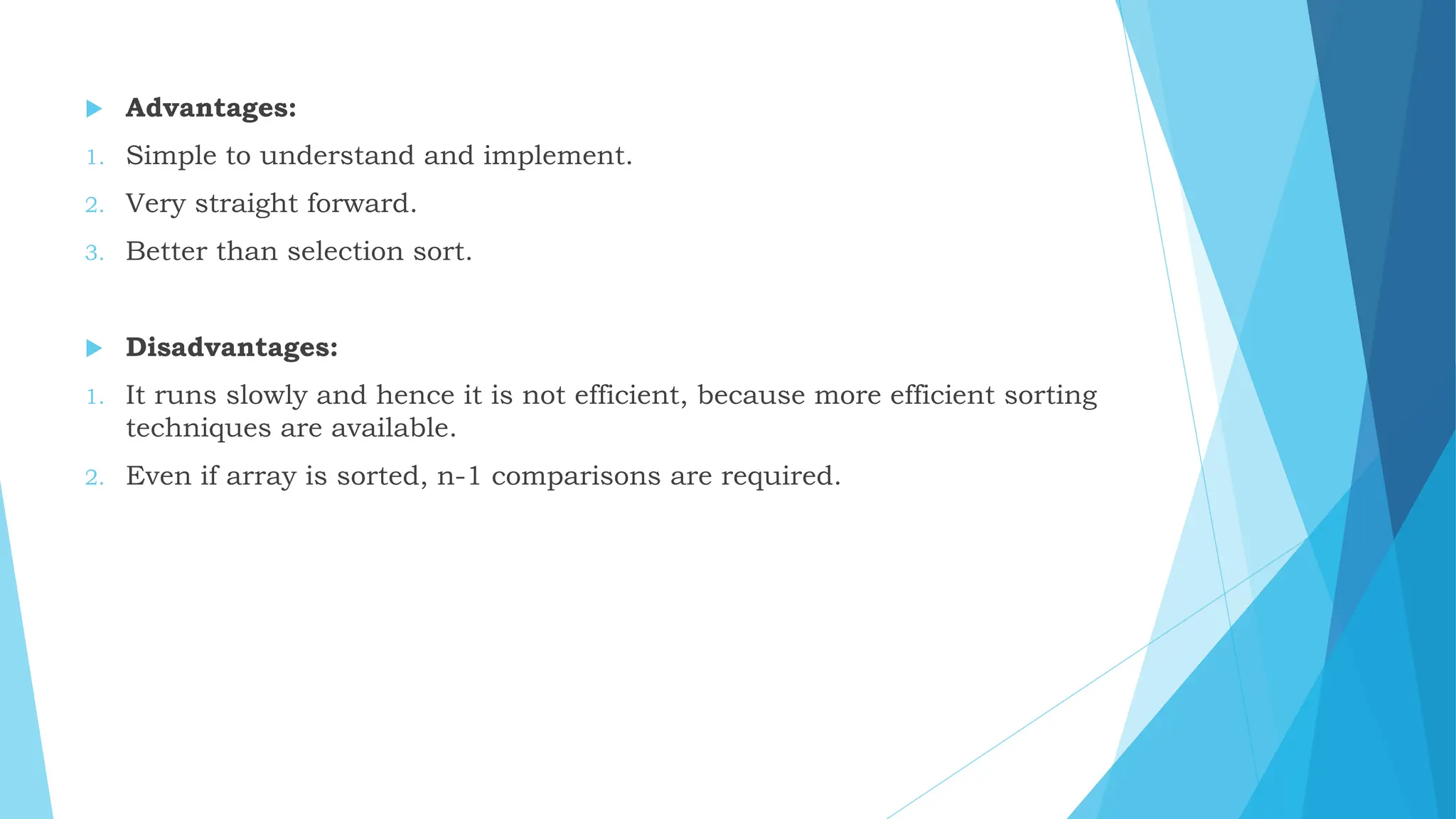The document explains sorting as the process of arranging elements in a specific order, highlighting internal and external sorting types. It covers various sorting techniques, particularly focusing on bubble sort, its algorithm, and analysis of best and worst cases regarding efficiency. Key factors for selecting sorting techniques include coding time, execution time, and memory requirements.
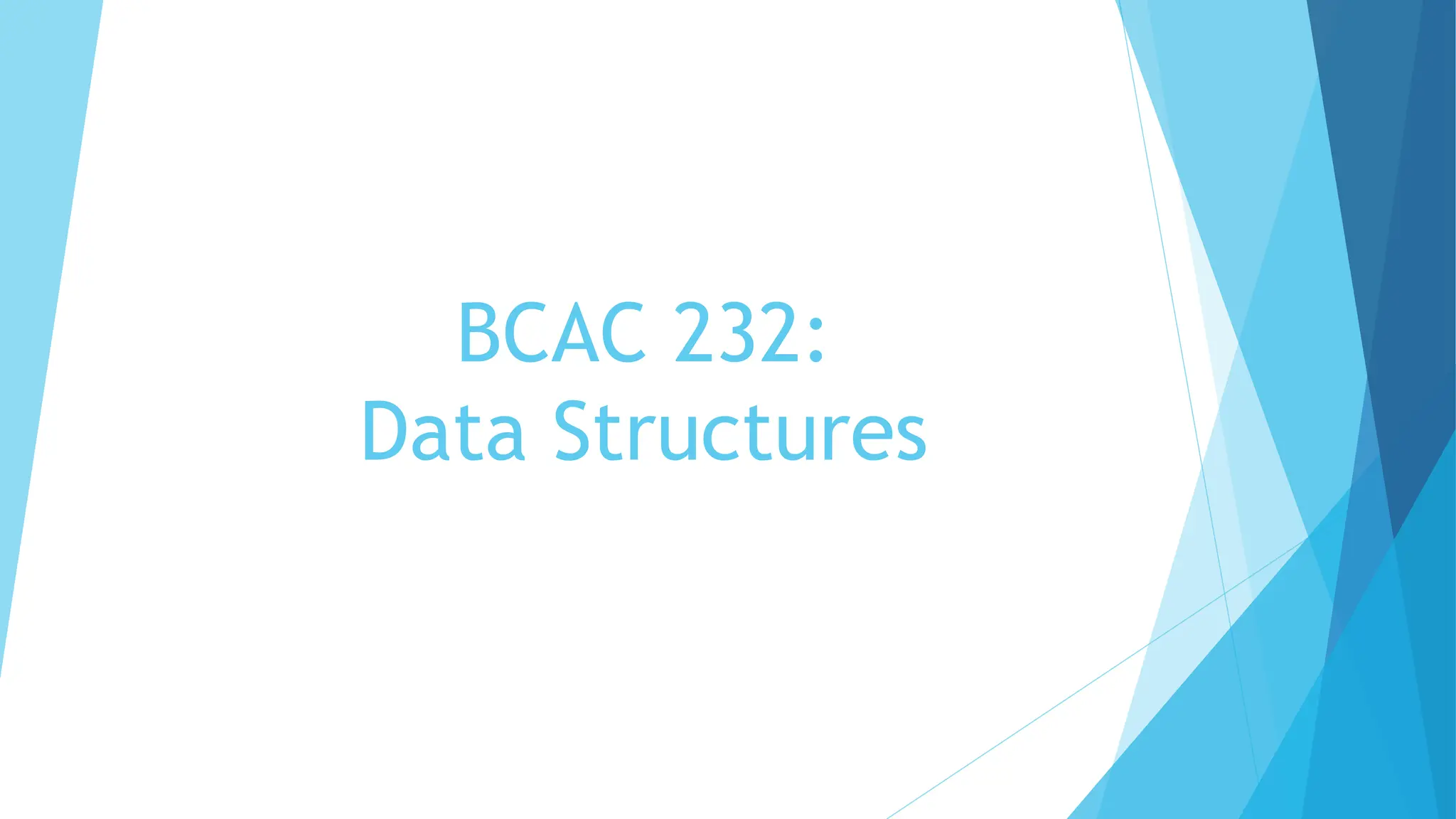
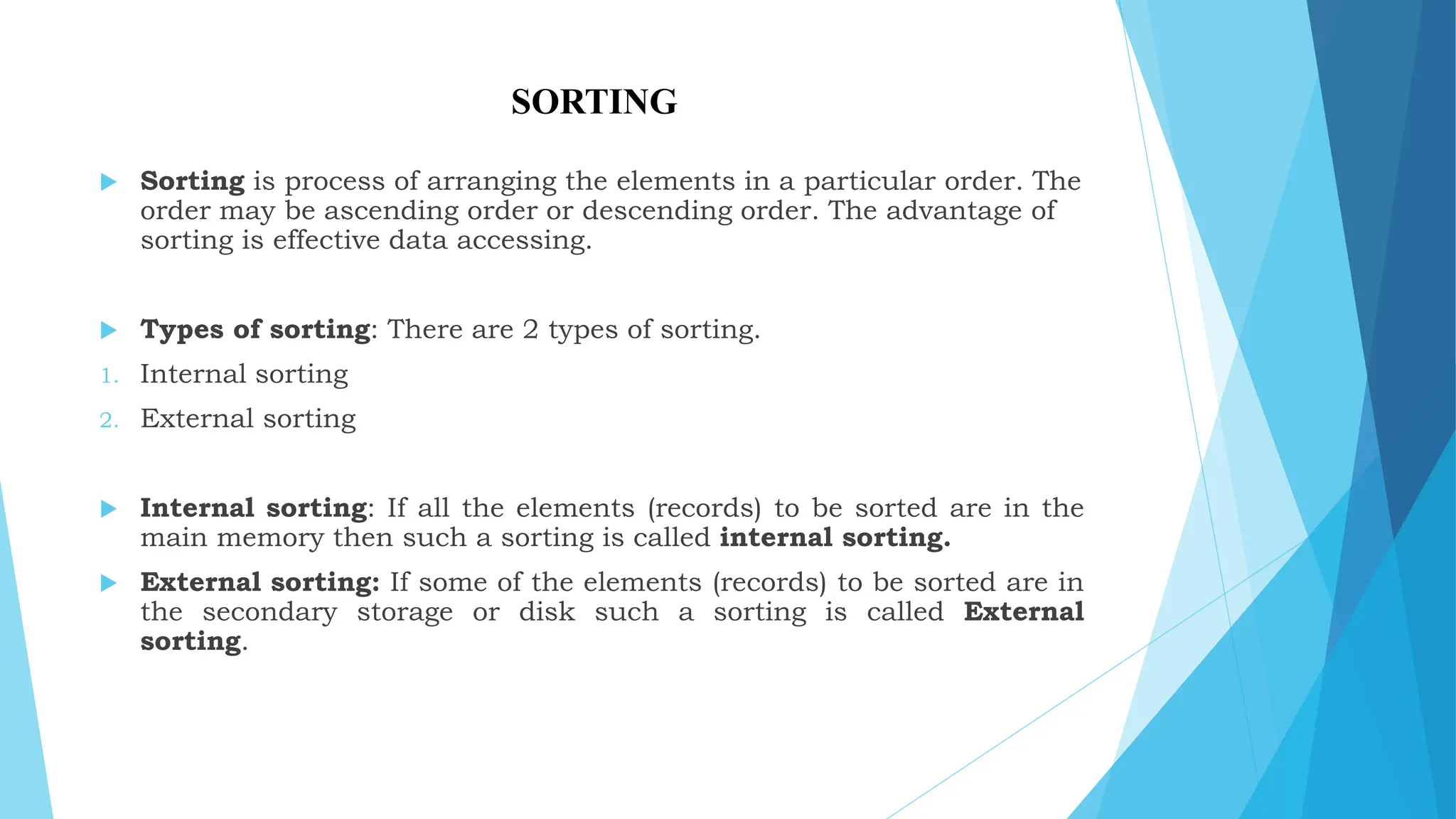
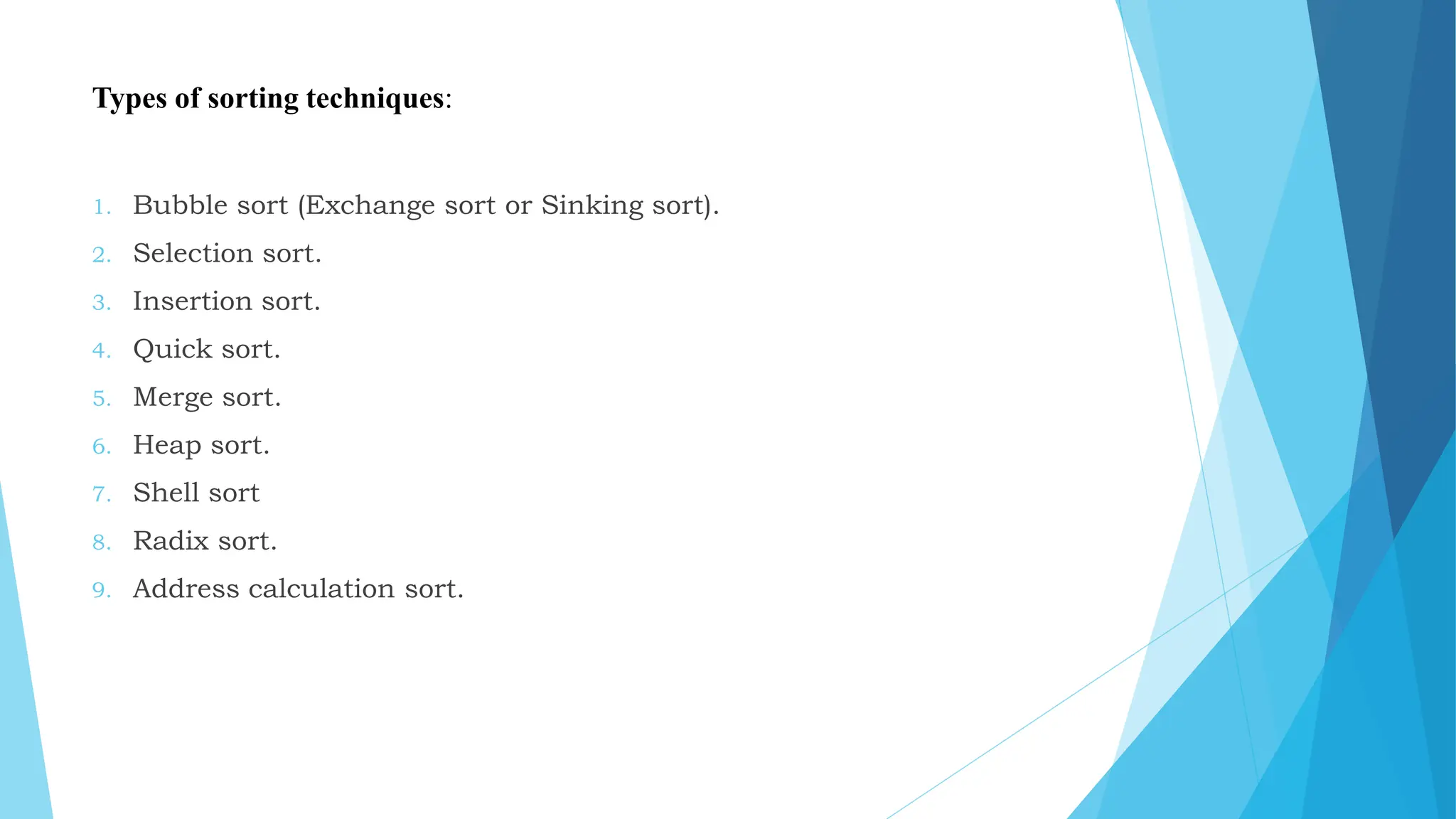
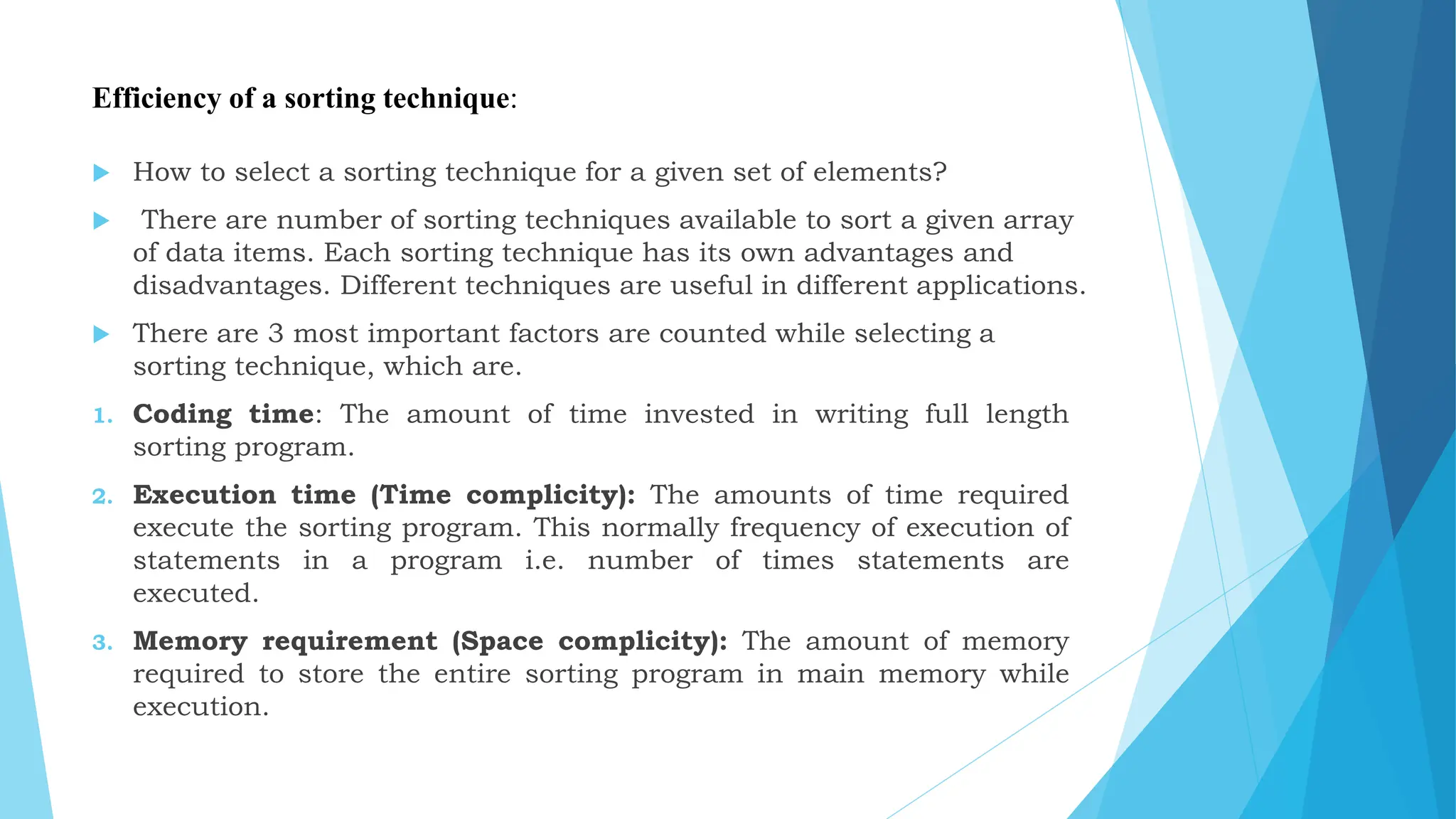
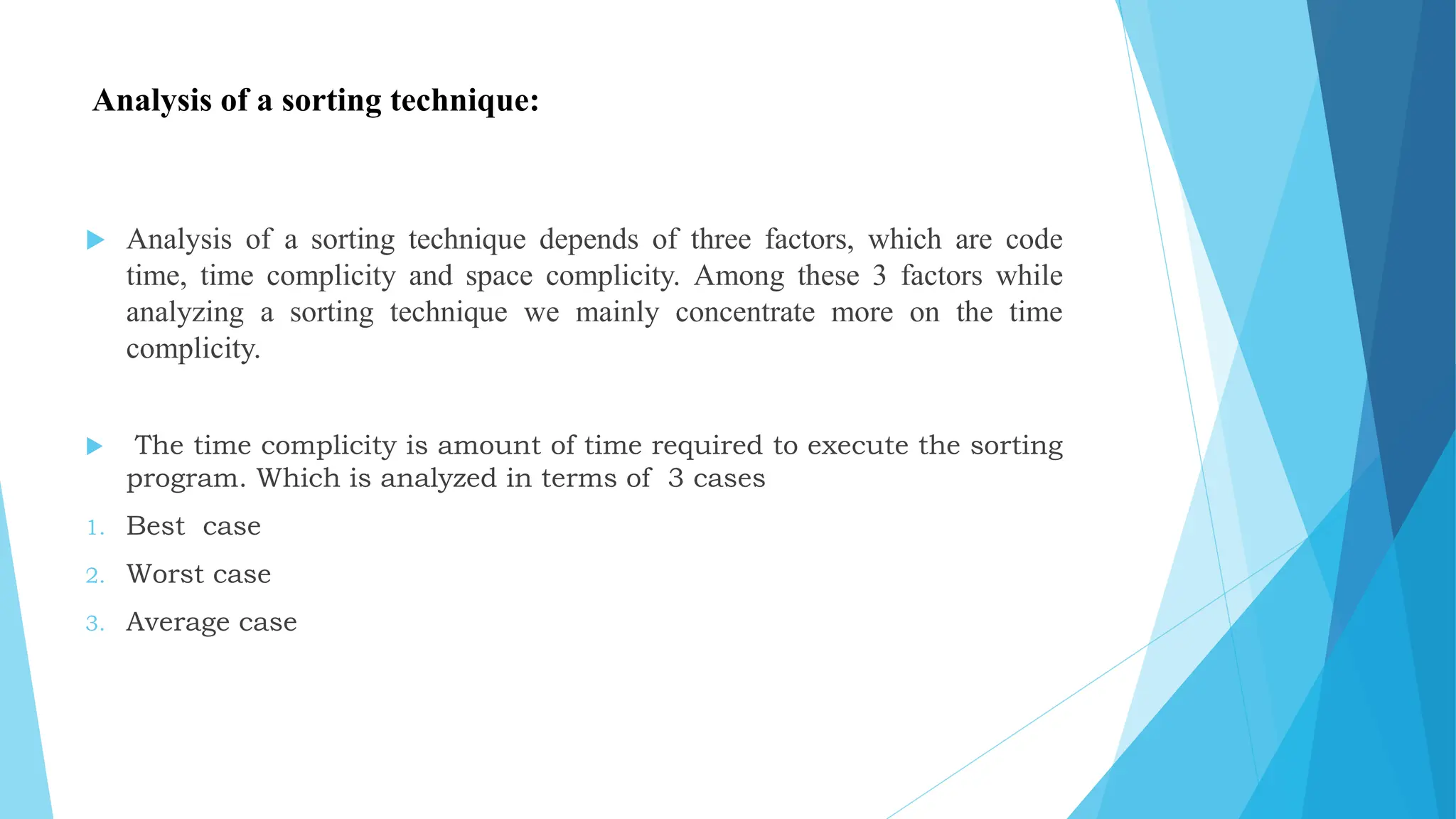
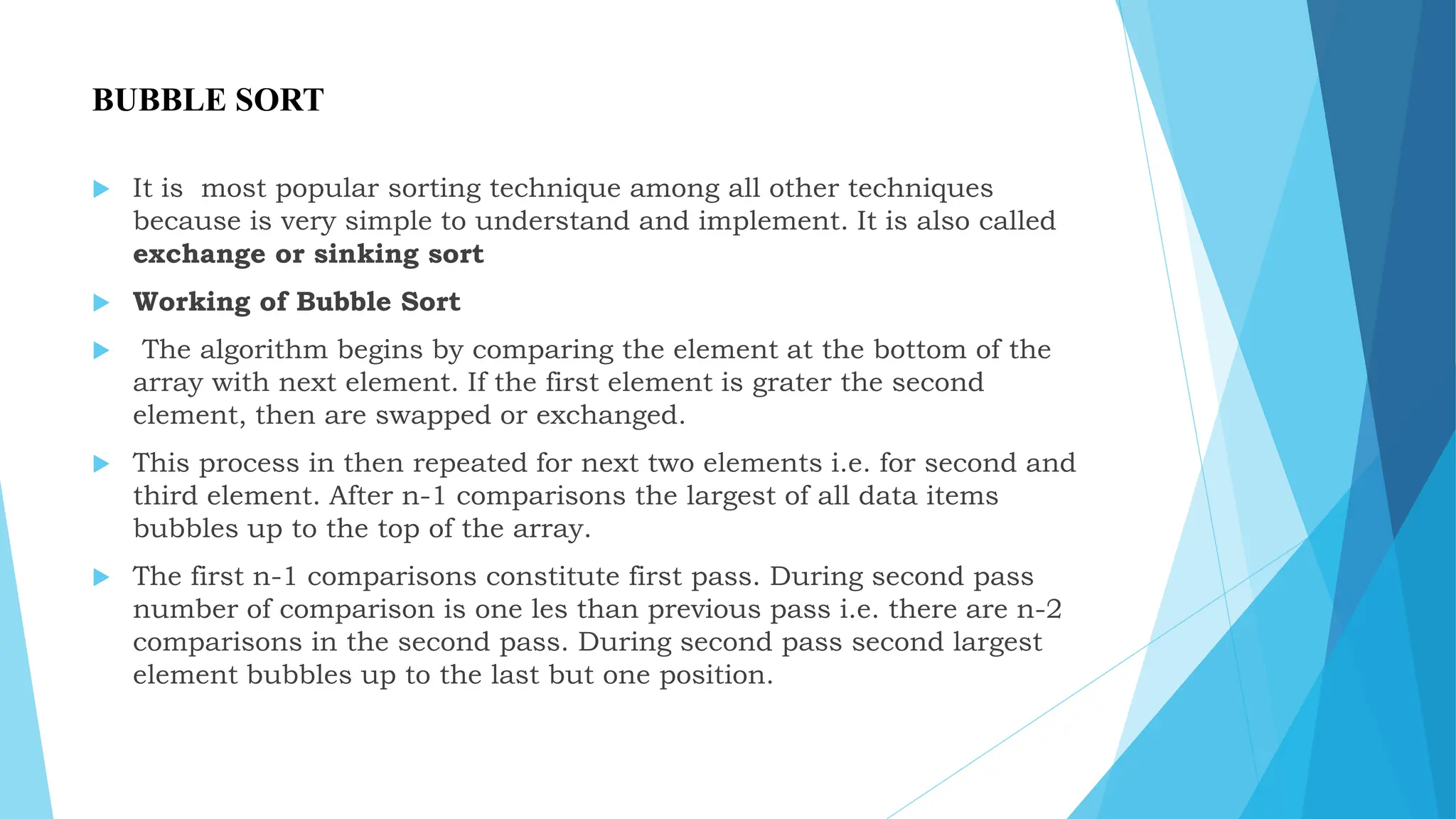
![ Consider following array A of elements.
A
A[0] A[1] A[2] A[3] A[4]
Begin the sort by comparing first two elements
Compare A[0] and A[1]. Since 30>10, interchange
Compare A[1] and A[2]. Since 30>5, interchange Pass 1
Compare A[2] and A[3]. Since 30>20, interchange
Compare A[3] and A[4]. Since 30>15, interchange
Largest element 30 has bubble up to last position
30 10 5 20 15
30 10 5 20 15
10 30 5 20 15
10 5 30 20 15
10 5 20 30 15
10 5 20 15 30](https://image.slidesharecdn.com/bubblesort-240711050720-8a4fe616/75/Computer-sciencebubble-sorting-algorithm-7-2048.jpg)
![Compare A[0] and A[1]. Since 10>5, interchange
Compare A[1] and A[2]. Since 10<20, no interchange Pass 2
Compare A[2] and A[3]. Since 20>15, interchange
Second largest element bubbles up to the position last but one.
Compare A[0] and A[1]. Since 5<10, no interchange
Pass 3
Compare A[1] and A[2]. Since 10<15, no interchange
Third largest element is in its right position.
Compare A[0] and A[2]. Since 5>10, no interchange Pass 4
Final sorted array after n-1 passes.
10 5 20 15 30
5 10 20 15 30
5 10 20 15 30
5 10 15 20 30
5 10 15 20 30
5 10 15 20 30
5 10 15 20 30
5 10 15 20 30
5 10 15 20 30](https://image.slidesharecdn.com/bubblesort-240711050720-8a4fe616/75/Computer-sciencebubble-sorting-algorithm-8-2048.jpg)
![Algorithm:
Algorithm: BUBBLE_SORT(A, n) This algorithm sort a given array A[n] using bubble sort technique. Variables I and J are
used to index the array and temp is a temporary variable.
Step1: start
Step2: Input the array A[n]
Step3: [Compute the sorting]
Repeat For I0 to n-1
Step4: [Compare the adjacent elements]
Repeat For J0 to n-1-I
Step5: If (A[J]>A[J+1])
[Interchange A[J] and A[J+1]]
TempA[J]
A[J]A[J+1]
A[J+1]temp
[End If]
[End step3 for loop]
[End step4 for loop]
Step6: [Display output]
Repeat For I0 to n-1
Output A[I]
[End for]
Step9: stop](https://image.slidesharecdn.com/bubblesort-240711050720-8a4fe616/75/Computer-sciencebubble-sorting-algorithm-9-2048.jpg)
